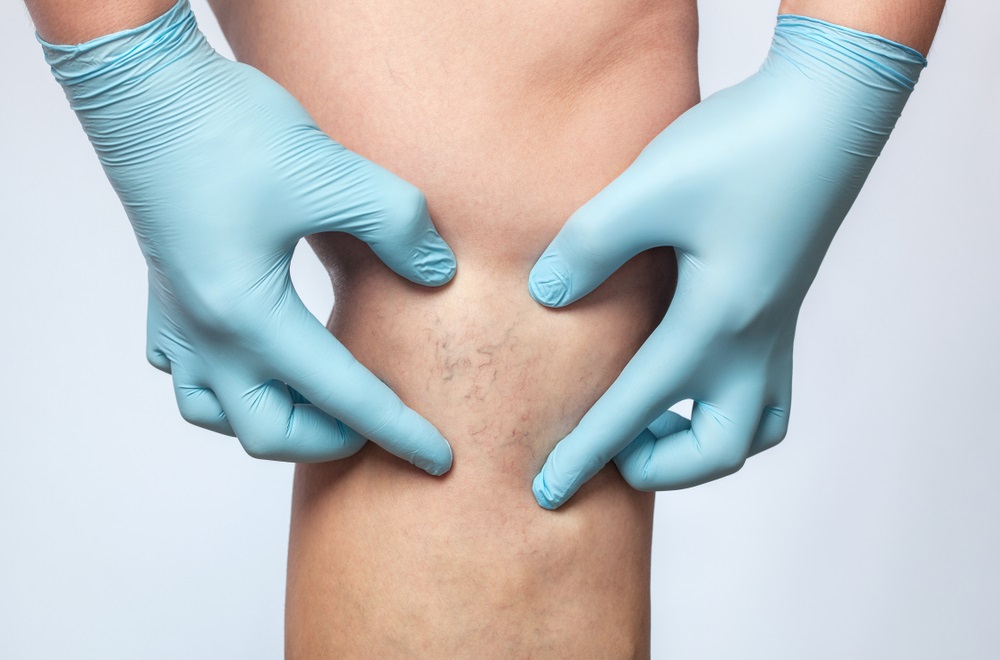Do you find yourself reaching for your jeans in the summertime instead of shorts because of your spider veins? Those thin red and purple veins near the surface of the skin, commonly called spider veins, can make many people want to cover up their legs even on the hottest days.
At Nunnally Dermatology, we want you to be able to feel confident enough to wear whatever makes you comfortable. For some people, this may mean finding treatments to help minimize spider veins. Sclerotherapy is one effective treatment for spider veins and small varicose veins.
What Are Spider Veins?
Spider veins are tiny threadlike veins that are often visible just underneath the skin, most commonly on the legs. While other types of visible veins, such as varicose veins are usually blue and cause the skin in the area to protrude, spider veins are flat and can be red, blue, or purple. They branch out in all directions and can look like spider legs or the branches of trees. This type of vein can also be called thread veins or telangiectasias.
Are Spider Veins Serious?
In the majority of cases, spider veins are not harmful. They usually do not cause any health concerns or pain for the person who has them. However, they can be a sign of other health problems. Before you pursue spider vein treatment, you should always talk to your doctor to check for any underlying problems. This is especially important if the spider veins have developed suddenly or you notice spider veins, discoloration, and swelling in your ankles. Most likely, the presence of spider veins is caused by something benign and you can continue with treatment.
What Causes Spider Veins?
The veins in your legs are there to carry blood from the bottom of your body back to your heart. When you use your muscles, your blood is propelled upwards and against gravity. To help with the process, your veins have venous valves which are like little doors that close in between contractions to prevent blood from flowing back in the wrong direction. Sometimes these venous valves don’t work properly, allowing blood to pool. Eventually, this can lead to spider veins and varicose veins.
Malfunctioning venous valves are hereditary which means that if your parents have spider veins, you’re likely to have them as well. Additional risk factors for spider veins can be sitting or standing for too long, being overweight, pregnancy, hormone changes, or aging. Women are also more likely to have spider veins than men.
How to Treat Spider Veins
Sometimes prevention can be the best form of treatment. Spider veins can be prevented in some measure by making sure to get enough exercise which will increase bloodflow to the legs. Protecting your skin from the sun can also help to prevent the development of spider veins.
If you already have spider veins, your doctor may recommend treating them by implementing a routine of healthy movement throughout the day. You can also try wearing compression stockings during the day or taking more time to put your feet up and let gravity work in your favor. However, if these solutions aren’t enough to help your spider veins, you can consider our sclerotherapy treatments.
Sclerotherapy for Spider Veins
Sclerotherapy is a minimally invasive treatment that is used to treat spider veins and smaller varicose veins. During the treatment, a small needle containing a salt solution is inserted into the vein. The solution is then injected into the blood vessel where it irritates the inside lining of the vein. The irritated vein eventually collapses, turns into scar tissue, and is absorbed by the body. The blood that was flowing through the spider veins will be rerouted to healthier veins that have valves that are working properly.
This therapy not only helps to resolve some of the cosmetic problems that can come from having spider veins, but it can also help to resolve discomfort that can occur such as burning, itching, cramps, swelling, or soreness.
What to Expect From Your Sclerotherapy Treatment
The first step of any sclerotherapy treatment is a consultation with your doctor to make sure there are no underlying health problems that could be causing your spider veins. Next, a treatment program will be recommended for your specific concerns.
Once it’s determined that you are a good candidate for sclerotherapy spider vein treatment, you can schedule your appointment. A typical sclerotherapy treatment session will last a little less than 30 minutes. During the session, we will cleanse the area and elevate your legs. Lidocaine can be used to help with any discomfort during the treatment.
Additional treatment sessions may need to be scheduled to treat all of the veins in the desired area. You can expect to see around 60% of the veins in the area disappear in the 6 weeks after your first treatment, with additional results being seen in subsequent appointments.
The veins that are treated will not return after they are dissolved. However, the condition can eventually occur in additional blood vessels after a time. If spider veins reappear, you may need another sclerotherapy session.
Spider Vein Treatments in Baton Rouge, LA
At Nunnally Dermatology, we understand the frustration of having spider veins on your legs. They can make you feel less comfortable when wearing your favorite sundress or shorts. The good news is that there is a safe and effective treatment for eliminating spider veins. If a healthy lifestyle and regular exercise aren’t enough to keep them away, contact our office to learn more about sclerotherapy. We would love to set up an appointment with you to discuss whether you are a good candidate for the treatment.


